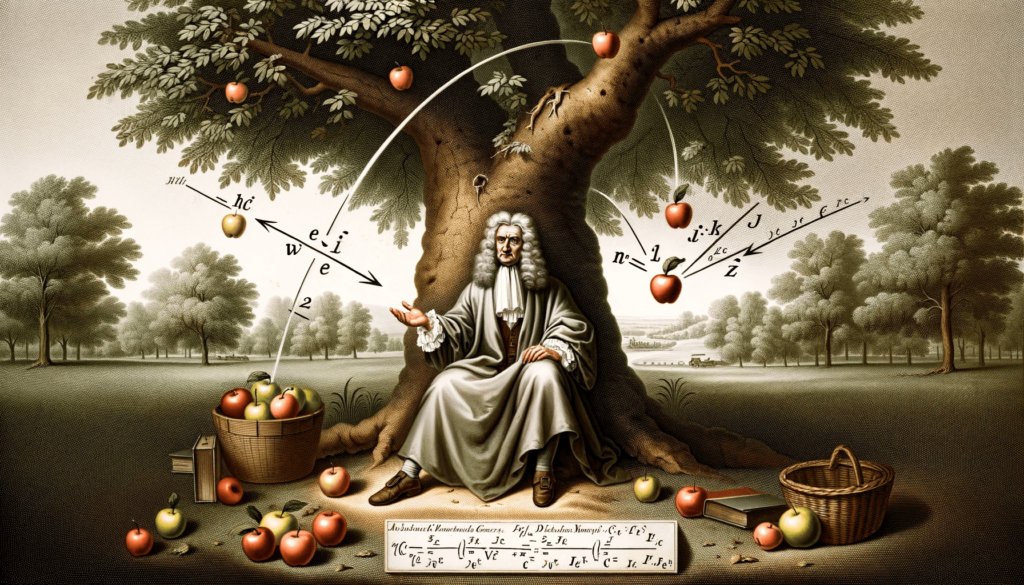This course article contains videos that can only be accessed once enrolled in the Learn AP Physics from Scratch Course.
Unit 2 Breakdown
You are on Lesson 2 of 8
- Unit 2.1 | Understanding and Applying Newton’s Law in Depth
- Unit 2.2 | Common Linear Forces, Equations, and Misconceptions [Current Lesson]
- Unit 2.3 | Drawing and Understanding Force Body Diagrams
- Unit 2.4 | Deriving Equations to Solve Linear Force Problems
- Unit 2.5 | Advanced Force Problems – Tension and Elevators
- Unit 2.6 | Advanced Force Problems – Ramps (Inclines)
- Unit 2.7 | Advanced Force Problems – Pulley System
- Unit 2.8 | Advanced Force Problems – Multi-Body System
In this lesson you will learn:
- What are linear forces and why they are important
- How we use forces in Physics
- Six common linear forces and their equations
The Importance of Forces
Forces is the most important concept to learn in Physics.
In fact, the rest of Physics is just learning about different types of forces and how they work.
Think about planets. From this we study gravitational forces.
Now zoom down to the microscopic level. From this we study the forces that holds atoms together. We call this the “strong force” because it is one of the strongest force to exist!
What is a force?
Simply put, a force is a push or pull.
And it doesn’t have to be a physical push or pull. Magnets, for example, can push and pull without needing to touch.
A force has a direction and a magnitude. Thus it’s a vector quantity.
Reflect back to Newton’s second law: F = ma. This equation tell us that a forces cause acceleration.
In this Unit we ONLY cover linear forces — forces that act in a straight line.
Pushing a Box
Think about pushing a box from rest.
As long as your pushing force, is greater than the frictional force, the box will speed up. In other words, you are accelerating the box.
All forces are responsible for accelerating objects.
Units
Newtons (N) is the standard unit for force.
Example: 100 N of pulling force.
Let’s derive the unit of force using Newton’s 2nd Law:
F = m x a → F = [kg] x [m/s2].
*Replace variables on the right side of the arrow with standard units .
So the unit, “Newton,” is a simple way of writing kg·m/s2.
Forces to Know
In order to excel in Physics, you MUST memorize a few basic forces and their formulas.
Forces can be anything! It doesn’t only have the forces given below. There’s no right or wrong way to write these as long as you know what the label means.
For example. Let’s say you want to describe an engine pushing a car. We can “make up” a label called Fengine.
The forces given below are the most common ones you’ll come across in problems.
- Applied forces (FA or A)
- Weight (mg or W or Fw)
- Tension (T or FT)
- Normal force (N or FN)
- Static Friction (fs)
- Kinetic Friction (fk)
- Spring Force (Fspring)
Now let’s cover each force in depth.
Applied Forces
Generally written as FA.
An applied force is a general force. There are no strict rules or equations for it.
Usually an applied force is responsible for pushing or pulling something.
For example. A car speeds up (accelerates). This means there is a force being applied. We can call this force Fengine, we can call it FA, or any other label that describes it best.
Weight
Let me state three commonly misunderstood facts:
- Weight is a force.
- Mass and weight are NOT the same
- Gravity is NOT a force.
Let’s start with gravity.
Gravity
\text{Gravity} = g = 9.81 \, m/s^2
Look at the units carefully. The units of gravity is m/s^2, which is a unit of acceleration.
Thus, gravity is an acceleration NOT a force.
Mass
Mass is what an object is made up of. Your mass is the same everywhere in the universe.
The only way you can loose mass is if you trim you hair, go on a diet, etc.
We measure mass is in kilograms (kg). For example: A person that has a mass of 70 kg.
Helpful tip: the number on the scale is your mass NOT your weight!
The force of Weight
Weight is a force that we get when we multiply mass by by acceleration due to gravity.
\text{Weight} = mg
This comes from F = ma. We use gravity (g) in place of a general acceleration (a).
Weight can also be written as F_W, W, or F_g.
And since gravity is a vector that always points down, your weight is also a vector that will always point directly down.
All objects, on earth, will have weight.
For example: Suppose I have a mass of 50 kg. My weight will be: 50 kg × 9.81 m/s2 = 490.5 Newtons.
Weight depends on gravity. The less the gravity, the less we will weight. Thus in space, where there is no gravity, we are weightless.
Tension
Tension forces can be anything involved with ropes, strings, or cables. Here’s a few examples in which you will find tension:
- Elevators
- Hanging signs
- Pulling objects with a cord
- Hanging objects
- Yo-yos
- Guitar or stringed instruments
If your problem involves any of the above, then you will likely be dealing with a tension force.
There is no set equation for tension. You will have to derive it based on each problem. We will cover this in the next lessons.
You can write tension as T, F_T or F_Tension.
Normal Force
This is the force exerted by ANY surface, perpendicular (90°) to that surface.
All surfaces, floors, tables, will exert a normal force.
There is even a normal force acting on your right now! If you are sitting, the normal force is coming from your seat that’s pushing at an equal and opposite to your weight (according to Newton’s third law).
Like tension and applied forces, there is NO set equation for Normal force. You will have to derive an equation for normal forces for every problem.
Misconception on Normal Forces
A lot of students think that normal forces are opposite to weight.
This is not always true. Instead, normal forces are always perpendicular to the surface.
Here’s an example that demonstrates this: Look at the box on the ramp below. While weight points straight down, notice how the normal force doesn’t point opposite to weight. Rather it points perpendicular to the surface.
Friction
There are two types of friction (f) — static friction and kinetic friction.
While they have two different meanings they share the same equation:
f = \mu N
Where N is the normal force, and µ (pronounced ‘mew’) is the coefficient of friction.
The coefficient of friction tells you how rough a surface is.
For example a µ = .1 would be very slippery, like ice. And a µ of .8 would be very rough, like a highway.
Static vs Kinetic Friction
To summarize, static friction holds an object in place, while kinetic friction resists motions once the object is already in motion.
Both use the same formula for friction, but the coefficient for static friction is generally greater than kinetic friction (for the same surface). We write it like this:
\mu_sN > \mu_kNSpring Force
The spring force comes from Hooke’s Law. It states that the force exerted on a spring is directly proportional to how much you stretch or compress it. Here’s the equation
F_{spring} = kx
Where k is the spring constant and x is the distance compressed/stretched
Anything involving a spring will have a spring force.
Lesson 2.2 Recap
You learned the seven most common linear forces in Physics, their equations, which problems to apply it to, and some misconceptions.
Furthermore, you learned about the significant difference between mass and weight.
Naming forces turned out to be ambiguous, but simple. For example weight can be written as F_W, W or mg.
Finally, you now understand the difference between static and kinetic friction.
Later, in Lesson 2.4, you will use these forces to derive custom equations.
Lesson 2.3 Preview
In the next lesson we will use our knowledge of forces to create simple force diagrams called FBDs. Drawing FBDs quickly and accurately will assist us in solve complex problems with ease!


